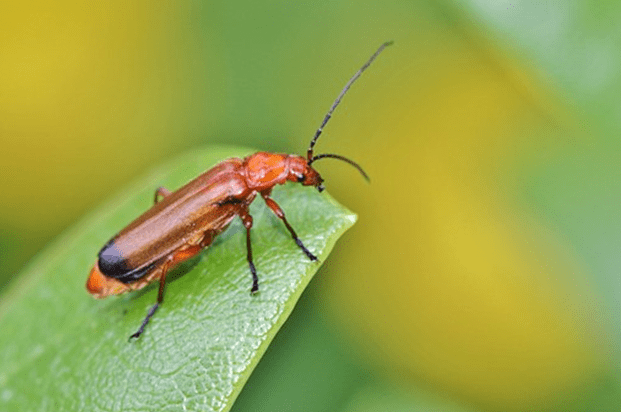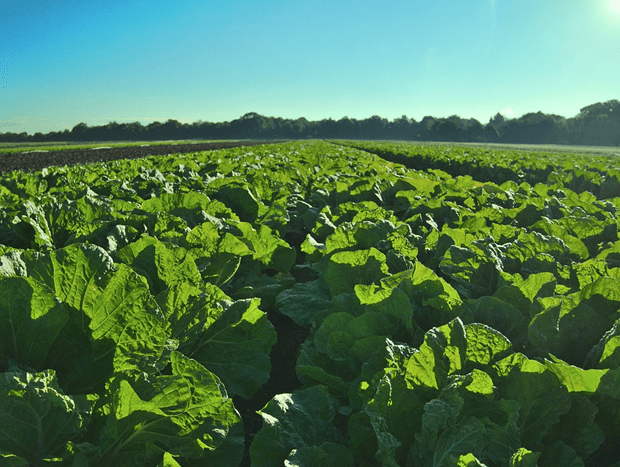Learn About the Top Organic Farming Methods in Organic Agriculture
To the inexperienced, organic agriculture may look just like conventional farming without the pesticides. The truth is that organic farming practices are incredibly complex, unique, and filled with particular organic farming techniques.
That is why we have come up with your ranking to the best organic farming methods. This helpful ranking offers you the following:
- An understanding of what organic agriculture is
- An overview of how to become an organic farmer
- A list of six methods of organic farming that are important
Each organic farming technique on the list will offer a unique alternative to conventional farming practices.
Instead of using chemical pesticides, we highlight a special alternative organic farming technique. Instead of fertilizer, we highlight a special alternative organic agriculture method.
By the end of this ranking, you should have a better idea of the organic farming methods that keep food all-natural from the seed to your dining table.
See Also: Top Premium Credit Cards | Ranking | Most Prestigious & Exclusive Credit Cards
AdvisoryHQ’s List of Best Organic Farming Methods
List is sorted alphabetically (click any of the organic farming technique names below to go directly to the detailed review section for that natural farming method):
Top 6 Best Organic Farming Techniques | Brief Comparison & Ranking
Organic Farming Techniques | Purpose | Example |
| Beneficial Insects | A pesticide alternative | Lady beetles preying on harmful bugs |
| Buffer Zones | Protects organic agriculture | Building a 50-foot barrier around your crops |
| Compost | A fertilizer alternative | Taking your plant waste and turning it into fertilizer |
| Cover Crops | Improve soil | Clover replenishing your soil |
| Crop Rotation | An all-round benefit | Switching your crops each season |
| Weed Control | Prevent weeds before they become a problem | Burning weeds instead of using chemicals |
Table: Top 6 Best Organic Farming Technique Options | Above list is sorted alphabetically
What Is Organic Agriculture?
The official definition of an organic farm comes from the United States Department of Agriculture (USDA):
“A production system that is managed to respond to site-specific conditions by integrating cultural, biological, and mechanical practices that foster cycling of resources, promote ecological balance, and conserve biodiversity.”
Organic agriculture does not use any sort of synthetic or genetically modified products in their farming practices. This includes eliminating:
- Genetically modified seeds (only organic certified seeds are acceptable)
- Synthetic pesticides (we will show you one of the main organic farm alternatives)
- Fertilizers (we will show you multiple alternative organic farming techniques for keeping the soil healthy below)
This organic agriculture uses biological methods of organic farming instead of synthetic methods of conventional farming.
These farmers must follow a set of standards created by the USDA in order for their crops to be certified organic.
All-in-One Change Management Tools
Top Rated Toolkit for Change Managers.
Get Your Change Management Tool Today...
How Do You Start an Organic Farm?
If you are reading this list on organic farming techniques because you are interested in becoming an organic farmer, here are a few things you need to know about having an organic farm.
Joining the organic agriculture movement is not something to do only for the sake of our food; it is also a booming business. Organic products went from bringing in $3.2 billion in 2008 to $6.2 billion in 2015.
In order for you to have a farm that is officially certified, you will need to follow these steps:
- First, you must create a plan with the necessary documents detailing what organic farming methods you will use to maintain organic agriculture.
- Then, you must submit that plan to a certifying agent.
- Inspectors will have to come out to test and examine your property and all the operations.
- The certifying agent will review the inspector’s report.
- Finally, the certifying agent will let you know if your farm is certified for organic agriculture.
Farmers transitioning from conventional farming to natural farming have many resources available to them from the USDA, like the Environmental Quality Incentives Program.
Don’t Miss: Top Business Credit Cards For New Business | Ranking | Best Startup Business Credit Cards For New Businesses
Beneficial Insects
The first organic farming technique we will look at on our list of organic farming methods is the addition of beneficial insects.



Image Source: Pixabay
When you think of farming, you probably only think of farmers wanting to get insects out of their farmland. But the truth is – only some insects or pests are bad for crops.
When an organic farmer introduces beneficial insects into their crops, they are careful to choose just the right ones for organic agriculture that will:
- Be predators to any potential bad insect or pest
- Will cohabitate nicely with the growing crops and pollinate for increased productivity
Since no chemical pesticides can be used in organic agriculture, this is one of the predominant organic farming methods for pest control.
Here are a few examples of insects that can be used with this organic farming technique on an organic farm.
- Braconid wasps: Females will put their eggs into other insects (like ones harmful to your crops); the larvae eventually kills the host.
- Lady beetles: These beetles eat problematic creatures like aphids or mites, and their larvae help in the process, too.
- Minute pirate bugs: This little bug will attack many different types of insects that could wreak havoc on your crops.
- Soldier beetles: These beetles feed on aphids and caterpillars, but watch out – they also feed on other beneficial insects, too.
Related: Top Small Business Credit Cards for Small Business Owners | Ranking | Top Small Business Credit Cards



Buffer Zones
An organic farmer may do absolutely everything in his or her power to get rid of chemicals and genetically engineered seeds, but that does not mean the world around them is doing the same.
The wind could bring in non-certified seeds. Water could bring in countless chemicals and pesticides from neighboring farms. And all of a sudden, you are no longer certified.
To protect their organic agriculture from contact with anything that could compromise its certification, one of the most popular organic farming methods is creating buffer zones.
This organic farming technique involves dedicating an entire farm area between the certified organic farm and any other next-door land areas.
Often, this organic farming technique includes:
- Windbreaks
- Diversion ditches
- A buffer distance
While an organic farmer may still use this buffer land to grow other types of crops, the crops in the buffer zones can never be marketed as grown through organic farming practices, even if methods of organic farming were used in those areas.
Compost
Since natural farming does not allow for the use of chemical fertilizers, farmers need to use alternative methods for creating rich, nutrient-dense soil. One of the most common organic farming techniques for this need is composting.
You may have heard of small compost practices for home gardens. Organic farming methods are similar, just done on a larger scale.
Plant waste decays and acts like a fertilizer, slowly giving the soil its nutrients. In addition, this organic farming technique can also:
- Increase good microbial activity
- Decrease the chance of plant disease
- Increase the fertility of the soil
- Improve water retention in certain types of soil
- Reduce heavy metals in the soil
This is one of the more time-intensive methods of organic farming. In order to make sure that all the plant waste is composting and not simply rotting, the organic farmer has to monitor oxygen and moisture levels at all times.









Cover Crops
The next organic farming technique we will look at on our list of organic farming methods is the use of cover crops.
Cover crops are planted in between regular crop growing seasons to help fill the soil back up with nutrients. The Center for Environmental Farming Systems explains other soil benefits of this organic farming technique:
- Increasing organic matter
- Forming soil aggregates to reduce erosion
- Boost porosity for better crop root growth
- Improve tilth for better water infiltration
- Increase soil microbes or arthropods for better soil structure
- Monitor soil moisture
As one of the most versatile organic farming practices, cover crops will also help with:
- Disease management
- Nematode management
- Insect management
Some of the cover crop species used in this organic agriculture method are:
- Winter/summer legumes
- Clover
- Cereal grasses
- Soybeans
- Sun hemp
- Buckwheat
- Millet
Keep in mind that this is only one of the organic farming methods, not crops themselves, meaning that an organic farmer must kill these crops before they set seed.
Popular Article: Top Cheap Credit Cards | Ranking | Best Low Credit Card Interest Rates (Cheapest & Lowest)
Crop Rotation
One of the fundamentals of organic agriculture is crop rotation. Many conventional farmers end up growing the same crop in the same field every year. But an organic farm needs to rotate their crops for many reasons.



Image Source: Pixabay
As one of the most important organic farming methods, crop rotation will help with the following aspects of natural farming:
- Improve soil fertility
- Provide some pest control
- Increase the crop’s yield
- Prevent disease
- Increase organic matter and biodiversity
The organic farmer will choose his particular rotation as one of his or her main organic farming practices. When they plant cash crops, cover crops, or green manure will depend on the local environment.
The idea behind this organic farming technique is that one crop over and over will deplete the ground. But different crops have different strengths and weakness.
So when you switch them, they are helping the soil in their own way without spending too much time hurting the soil in their unique way.
Free Wealth & Finance Software - Get Yours Now ►
Weed Control
The final organic farming technique we will look at on our list of top methods of organic farming is overall weed control.
Since organic agriculture is not allowed to use chemical weed control, farmers need to utilize various organic farming practices to make sure the weeds do not take control of their land.
Some of the other organic farming methods we have mentioned can help with weed control like crop rotation and cover crops. But farmers utilize other organic farming techniques to deal with weeds in an all-natural way.
An organic farm could do this through:
- Mowing
- Mulching
- Hand weeding
- Crop flamer
The main organic farming technique, however, in organic agriculture weeding is to prevent too many weeds through intentional natural farming.
Conclusion – Top 6 Organic Farming Technique Options
After reading through this ranking, you now know the following about organic agriculture:
- What an organic farm is
- How to become an organic farmer
- Many of the top organic farming techniques to keep natural farming alive
Whether you are aspiring to start in the field of organic agriculture or if you are simply interested in organic products, understanding these organic farming methods can give you a brand new appreciation for organic farming practices.
AdvisoryHQ (AHQ) Disclaimer: Reasonable efforts have been made by AdvisoryHQ to present accurate information, however all info is presented without warranty. Review AdvisoryHQ’s Terms for details. Also review each firm’s site for the most updated data, rates and info. Note: Firms and products, including the one(s) reviewed above, may be AdvisoryHQ's affiliates. Click to view AdvisoryHQ's advertiser disclosures.





